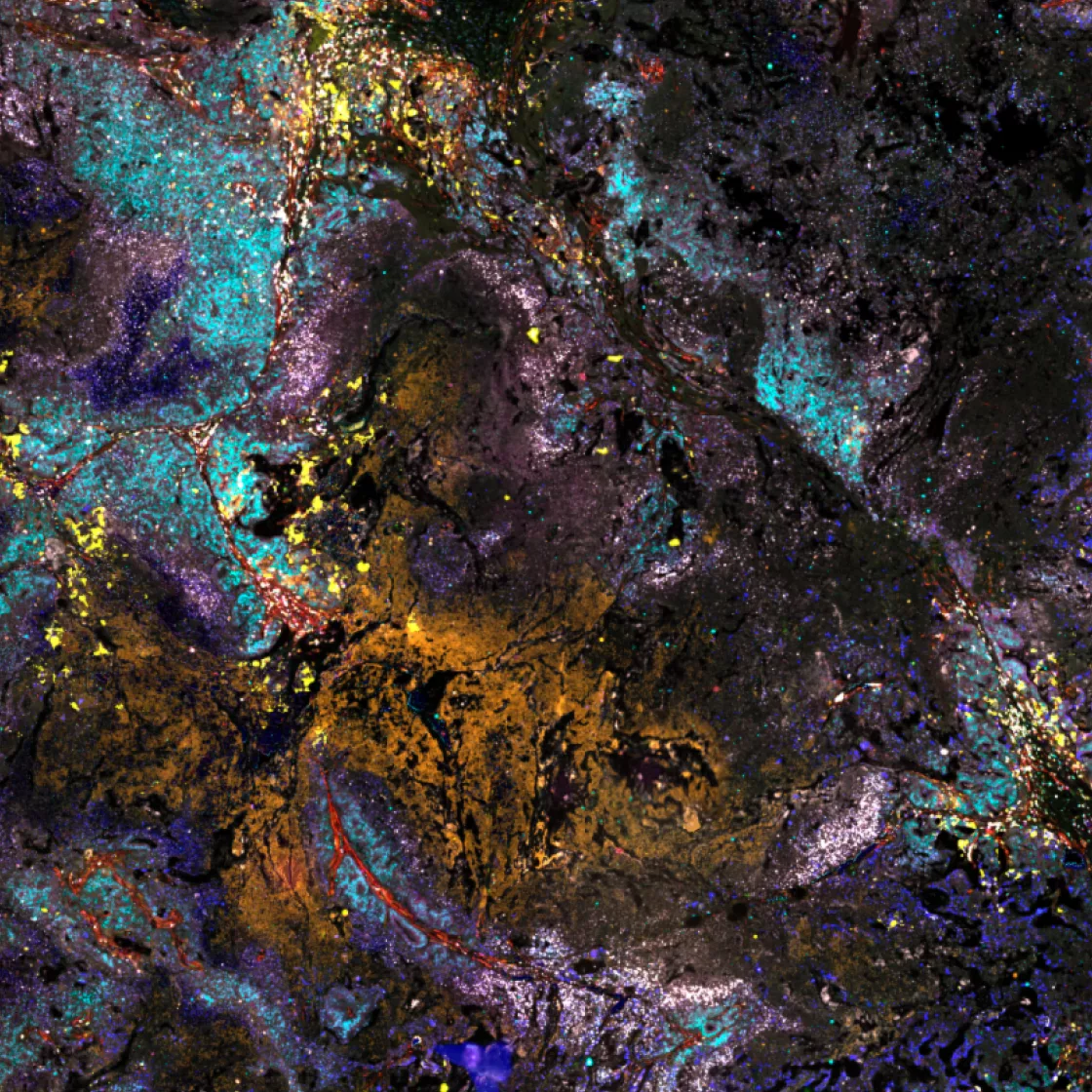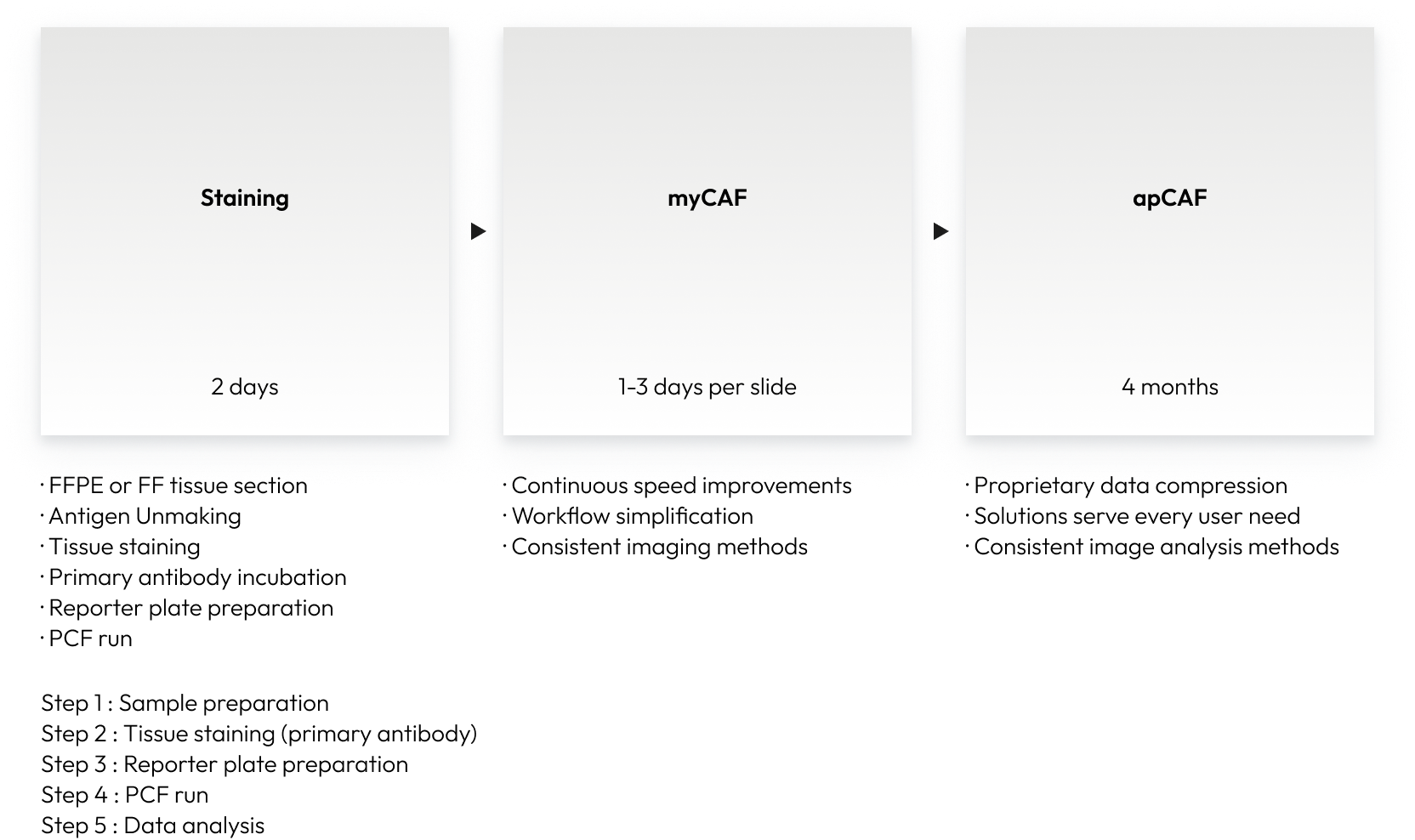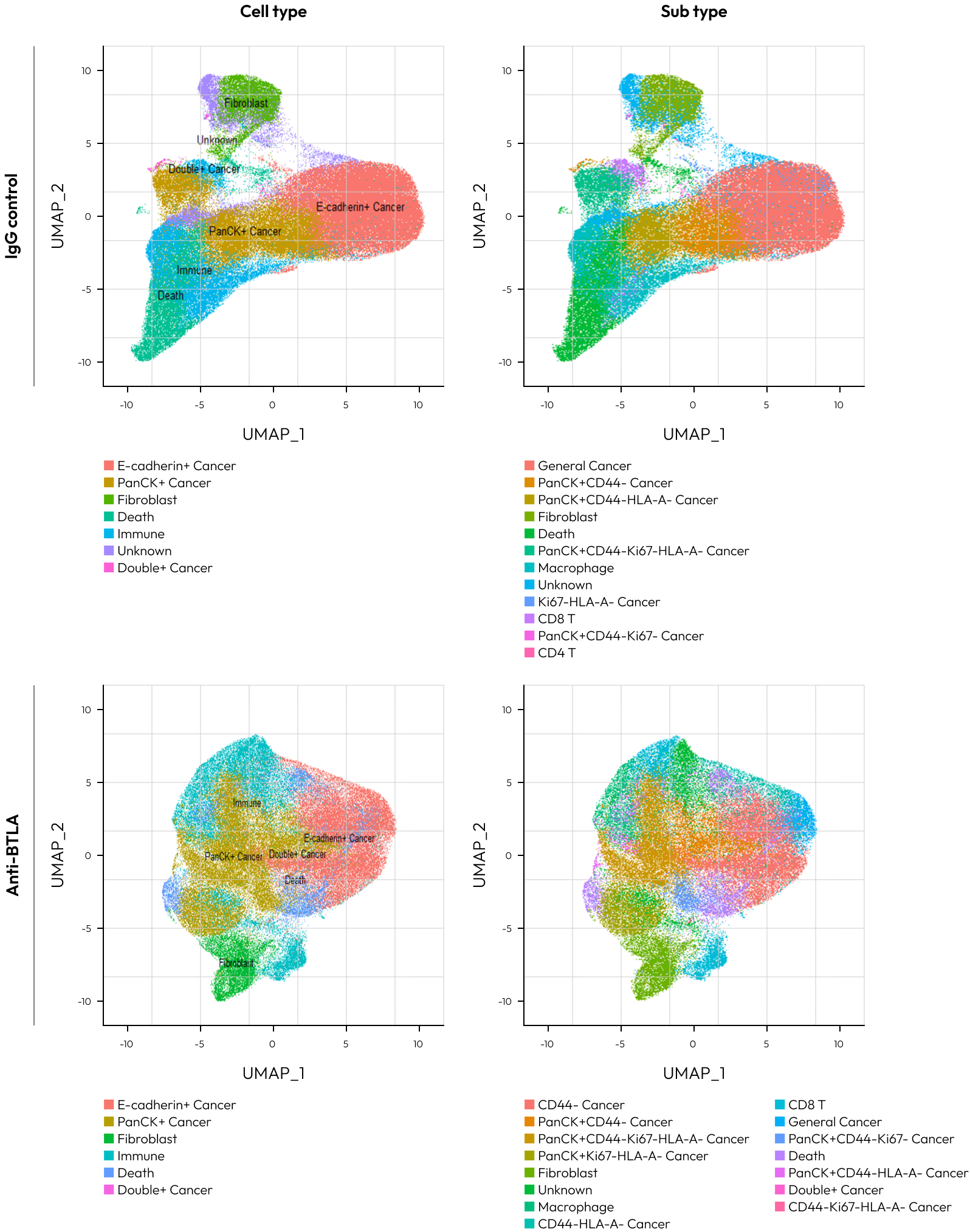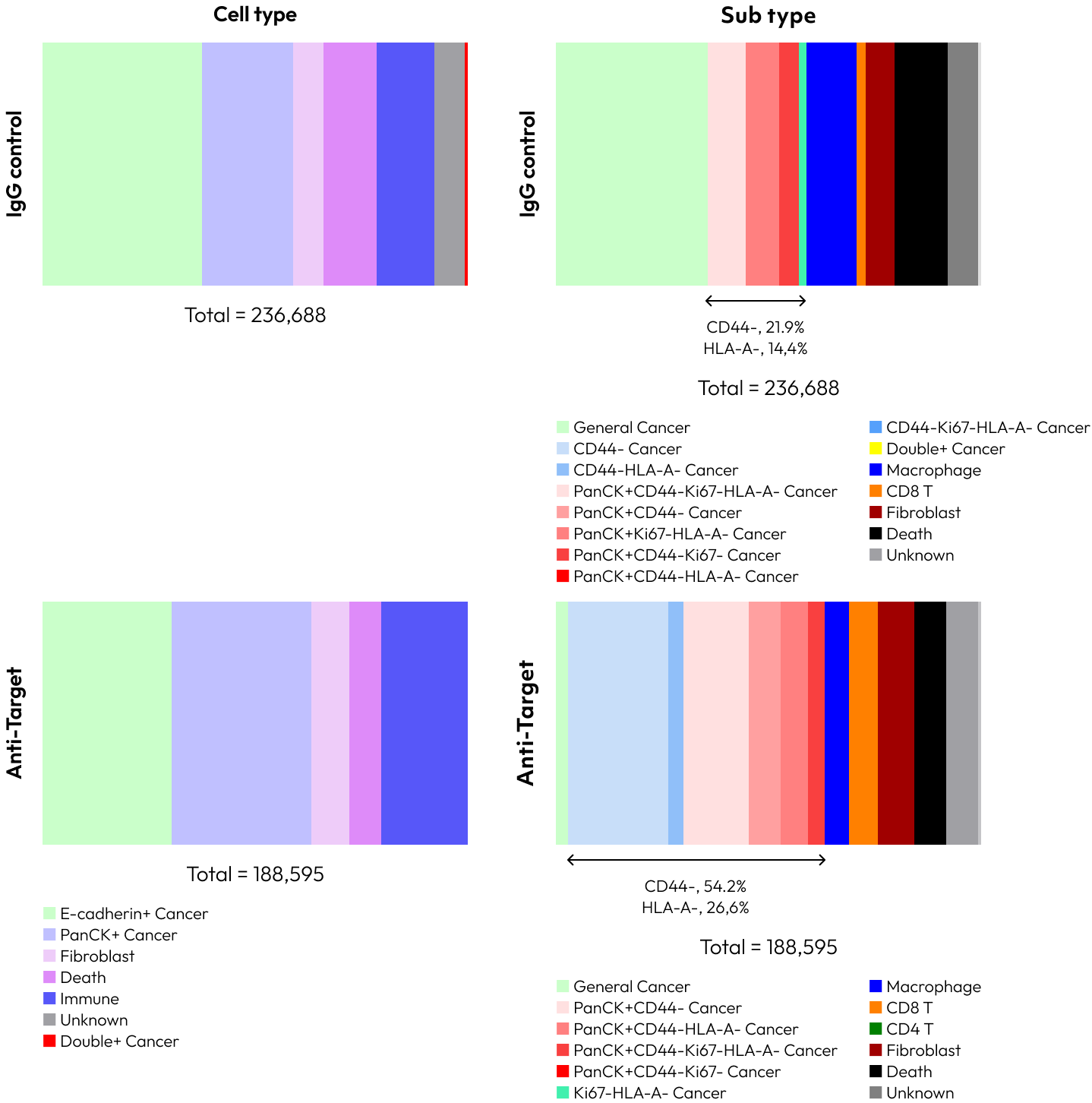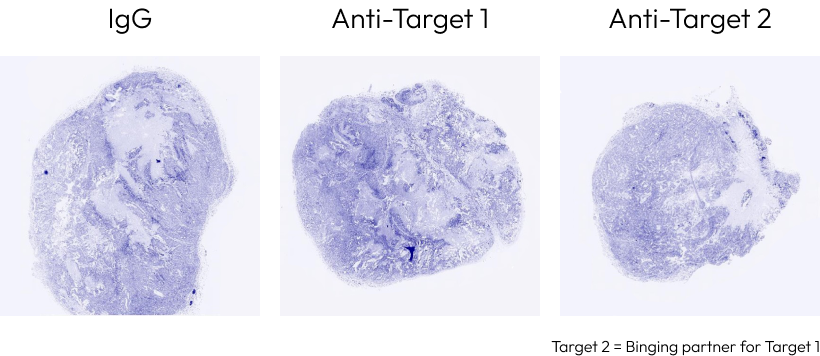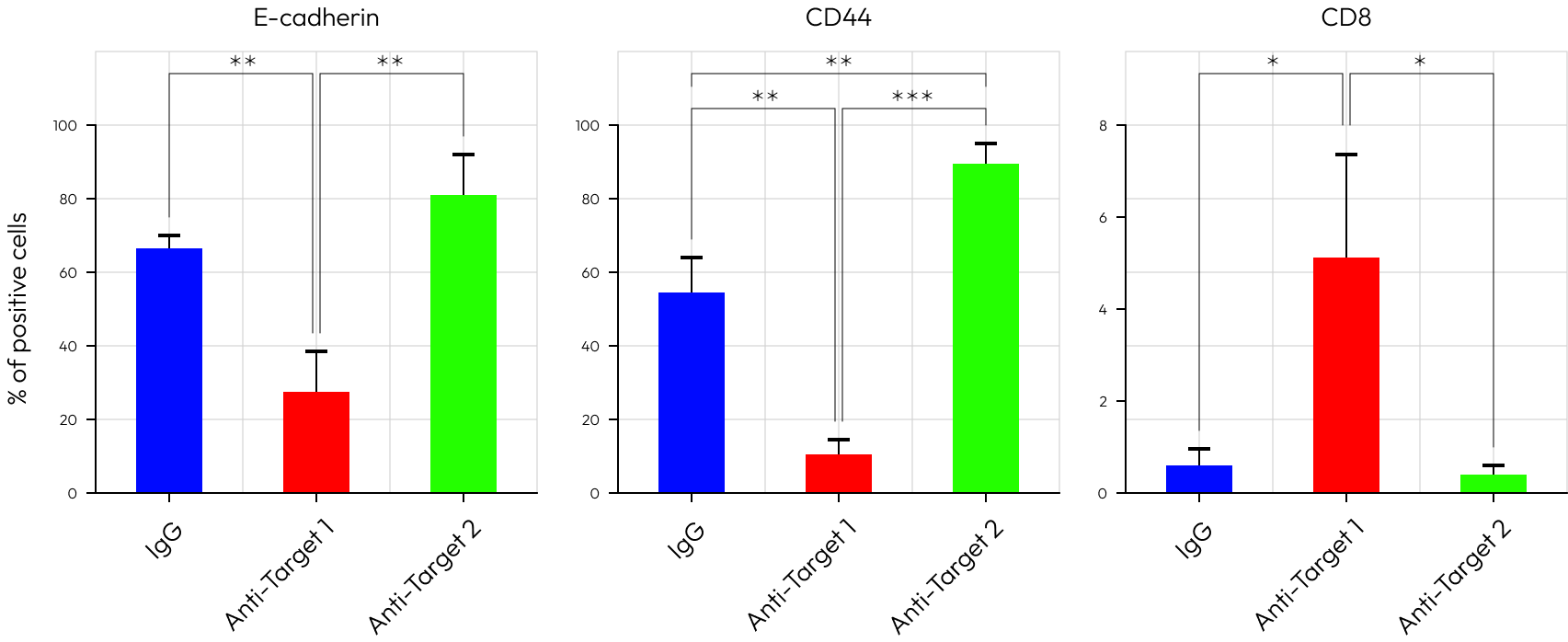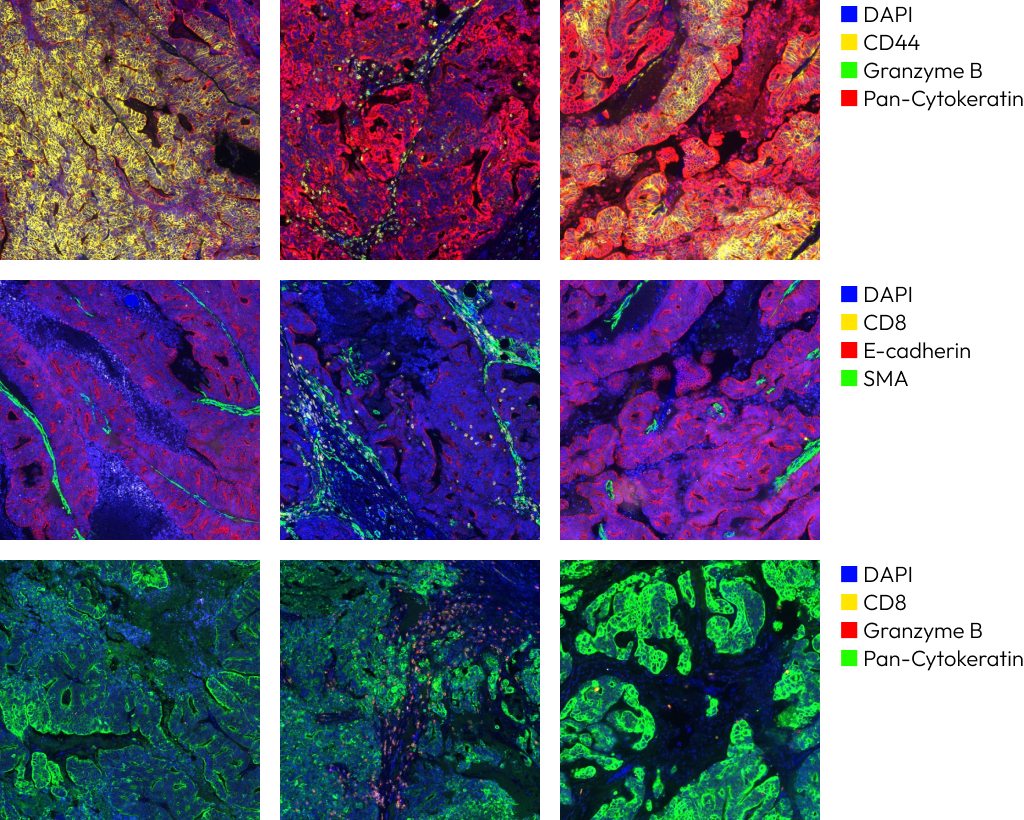PhenoCycler (formerly CODEX) was developed to overcome the limitations of existing IHC.
Multiplex-IHC is an experimental method that can confirm the expression of more than 100 biomarkers on one tissue slide.
It is possible to check the expression of various biomarkers on a single tissue slide and conduct comprehensive research on cell composition,
cell function and state, and cell-cell interaction.
CODEX analysis is performed using DNA barcoding and uses antibodies conjugated to unique oligonucleotide sequences.
By using a target specific barcode called dye-labelled reporter, it is possible to stain more than 100 biomarkers by
repeating the labeling cycle by dyeing three colors of fluorescence in one cycle.
To identify the mechanism of a new target, acquire spatial information
by simultaneously staining 31 markers in PDOX tissue.
Identifying immunological mechanisms underlying the efficacy of anticancer immunotherapy and discovering biomarker candidates through theapplication of spatial biology
